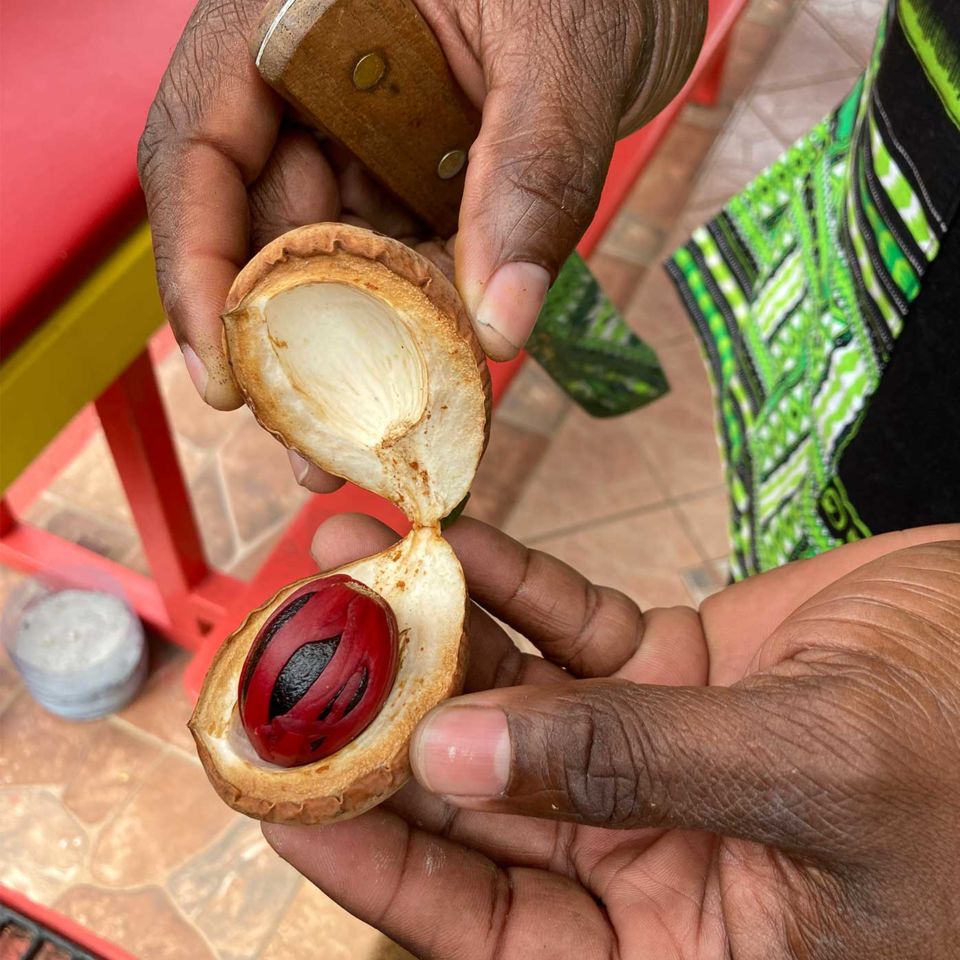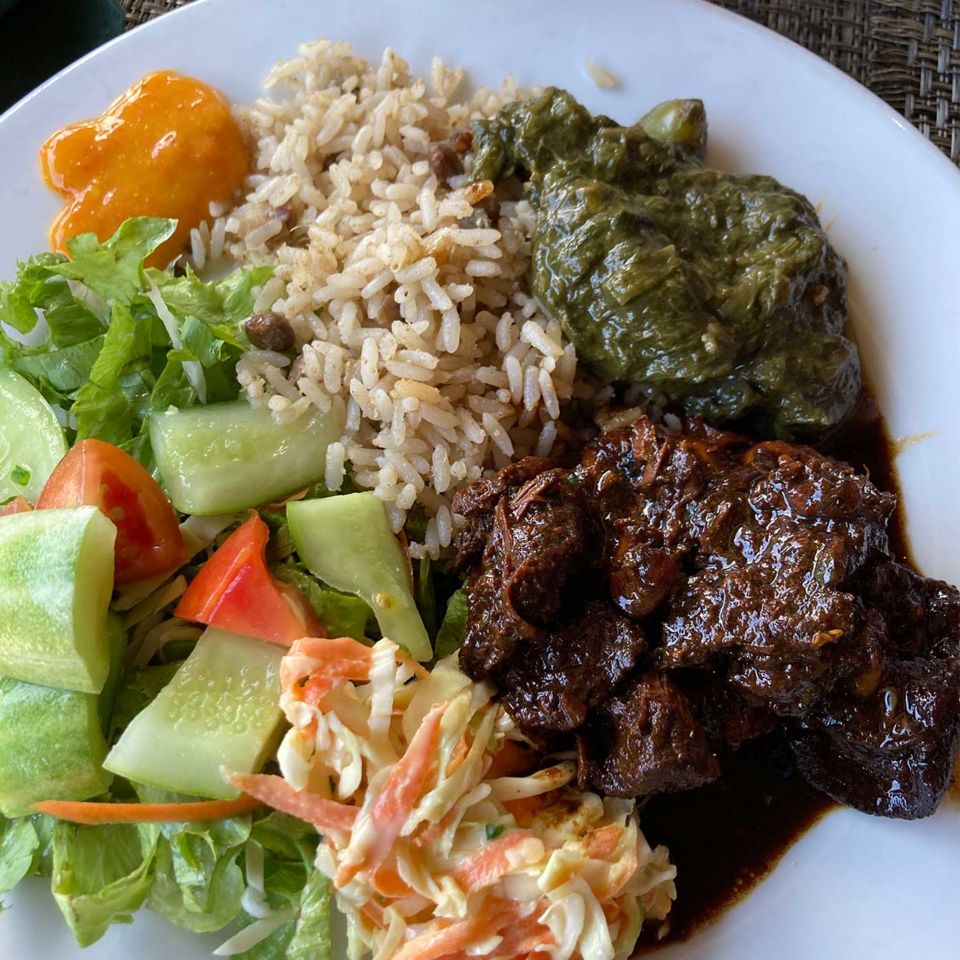Travel
Travel review: The spice of life on Grenada
by Helena Lang

The tiny island of Grenada is known as the ‘Spice Isle’ and alongside its gorgeous beaches is a rich food heritage, says Helena Lang
When you sprinkle cinnamon on your rice pudding, grate nutmeg onto your spinach or add a few cloves to your apple crumble, how often do you think about where those fragrant spices come from or how they are produced? On the little Caribbean island of Grenada, that’s pretty much at the centre of everyone’s mind.
The island is tiny – less than 350 square kilometres, with fewer than 150,000 inhabitants – but every square metre that isn’t taken up with white-sand beaches is a riot of plants, spices and fruit. It’s a glorious and plentiful one-island garden.

Roger, a charismatic and knowledgeable local guide, drives us around this verdant paradise and points out the bounty. Even the rainforest, a national park, is laden with fruit, spices and herbs. As he put it, every plant helps out the other ones, offering shelter from the sun or protection from pests. ‘It’s well-organised chaos,’ he says.
He takes us to a small, well-tended garden at the side of the road, where the owner cultivates a huge selection of edible plants, all carefully labelled with their Latin names with samples of each to taste and try alongside the owner’s homemade rum punch (or, even better, his spiced punch).

Every spice we rub or herb leaf we crunch has an aroma so intense it is a world – or ocean – away from the dusty, dried versions sitting on my shelf at home. The thick green vegetation, in all its myriad shades, spills over rocks, mountains, buildings and onto the edges of the roads, right up to the seashore.
It’s a constant fight of man versus nature as it climbs through fences, around the concrete stilts the village houses are built on, and through gardens, entwining and knitting itself into a dense green patchwork. It is only the salty sea, with its pounding waves, that stops it spreading all the way onwards.

At the Royalton Grenada resort, the gardeners work tirelessly to control the chaos and are rightly proud of their beautiful displays of tropical plants – there’s a lagoon where, every morning, a large grey heron stalks the waters and, in late afternoon, a flock of white egrets return to nest.
The resort is large and well spread out along a beautiful palm-tree laden beach, with plenty of spots in which you can find a quiet corner in the sun or shade, or join in the organised activities and jiggle away to the sounds by the pool bars. The food is a mix of local dishes and classic hotel fare; there are plenty of pizza and pasta opportunities either at Gourmet Marché, the hotel buffet restaurant, or at Grazie Italian Trattoria, the more upmarket dining destination that overlooks the beach.

I prefer to try the local dishes, though, which are beautifully cooked and served with a smile. During our stay, my favourites are stewed pumpkin and lambi soup – not lamb, but conch (pronounced conk, a large sea snail) – and grilled mahi mahi, a local white fish, with a good selection of vegetables and salads, and spoonfuls of the island’s spicy chilli sauce.
There’s a very good upmarket Indian restaurant, Taj, on site too, and we enjoy tender chicken tikka, delicate aloo tikki and a milder-than-we’re-used-to chicken vindaloo, all served with plentiful rice, naan and raita.
Outside of the hotel, a drive to the north-east of the island brings us to Armadillo, a tiny guesthouse with a little restaurant run by a characterful couple, who are originally from Switzerland. They lovingly tend to an extensive kitchen garden on the slopes of Mount Rodney and use their produce in delicious, beautifully presented dishes, which are served to a maximum of eight guests on a garden table each evening.
Dishes are a blend of Caribbean, Asian and European styles, with slivers of local fish served raw in ceviche and tartares, and grilled to perfection with sides such as sweet potato wasabi mash or passion fruit polenta.

No one goes hungry here. Just walking down the road, you can pick enough for lunch. Even in the prison, up on top of the hill above the charming capital of St George’s, the inmates grow, cook and eat their own produce. And what a view they have, too – it’s probably the best on the island, and looks down at the harbour in St George’s, across to the new government building in the hills and over to the former fort, rich in history both romantic and violent.
It was here in 1983 that former prime minister Maurice Bishop was executed by a firing squad under the orders of his opponents. Grenada, a former British colony, had gained independence on 7 February 1974: a date that, in itself, had been marred by violence, strikes and controversy.

This turmoil continued until the mid-1980s when, after the coup, there was a US-led invasion of the island and a peacekeeping force was put in place until 1985. There are continuing calls for reparations from Britain and, recently, Laura Trevelyan, a former BBC correspondent with family links to the slave trade, donated £100,000 to education projects on the island.
But, while people are happy to have level-headed discussions about the past and what the future holds, I don’t think I’ve met friendlier, warmer or more welcoming people anywhere. All are keen to show the best their homeland has to offer and are very hopeful and optimistic about their future. Education is prized here, as is good behaviour and respect for elders. Even swearing in public is illegal.

At the Belmont Estate we are reminded that, after slavery ended, the former slaves still weren’t allowed to buy or own property. However, the indentured workers from India were. One of the descendants of these workers, Shadel Nyack Compton, now owns (alongside other family members) this former coffee and sugar plantation, which produces some of the best and most delicious chocolate on the island. A small tour
shows us how the sticky white beans from inside the pod are first washed, fermented under thick burlap sacks, then dried out in the sunshine in huge wooden trays. Previously, local women would turn them daily by walking barefoot through the layers, scooping the beans up with their toes, so each bean got its moment in the sunshine. The beans are then roasted in a tiny factory – more a modern workshop – before being turned into a dark, rich chocolate or mixed with milk solids for a creamy milk version.

Lunch on the estate is a colourful, fun and music-laden experience, accompanied by a local school steel band. We kick off with pumpkin soup and the national dish, ‘oil down’ – a spicy chicken and vegetable stew flavoured with coconut milk – and a sticky beefy pepperpot served with rice and peas. Best of all is the locally produced ginger beer… a non-alcoholic, refreshing, opaque drink that sparkles with fresh root ginger.
Our last few days on Grenada are spent in the cosseting luxury of the Spice Island Beach Resort. This is a whole other world – just 64 boutique rooms and suites, many with private pools and gardens – catering for those who want to chill, relax and forget about their problems. Many of the guests we speak to are repeat visitors and it’s easy to see why.
The resort is situated right on the island’s best and biggest beach, Great Anse. From the resort, you can walk the two-mile stretch of fine sand from one end to the other, encountering quiet spots with leaning palm trees, local families picnicking, swim schools teaching youngsters the best and safest way to deal with the ocean, fishermen, water taxis, cruise-ship guests and friendly beach hawkers, who tempt you with local spices and handicrafts to take home.
The owner, Janelle Hopkin, is not only beautiful and very smart, but she’s also a single mother with a huge project on her hands. Having inherited the role after the hotel’s founder, her father Sir Royston Hopkin, passed away in 2020, she is staying true to his passion project while also making it a holiday destination for a younger, hipper crowd.

Many of the ingredients used in the kitchen are bought from staff. As Janelle says, ‘Everyone in Grenada has their own version of a kitchen garden or small holding complete with chickens and often goats.’ The chefs blend elegant European cooking techniques with local ingredients and flavours. Particular hits are the fish dishes: a spicy swordfish steak comes with a fresh, quinoa salad and the Creole fish stew at the weekly buffet gets us going up for seconds.
All dishes are very welcome, though, after a few of the locally produced excellent Blue Light Caribbean Gin cocktails at the convivial bar. A highlight for me each evening is to end the meal with a homemade ice-cream or sorbet – the flavours of which, including nutmeg and cinnamon, change daily and are developed by Janelle’s mother, Lady Bette Hopkin. I also treasure the little complimentary packages of spices in our suite to take home and use in my cooking – so, even during the bleakest winter months, I can grate, crush or sprinkle to inhale the aroma of Grenada, this precious Spice Isle.
How to book
Doubles at the Royalton Grenada (royaltonresorts.com) cost from around £358 per night in a Luxury Room. Doubles at Spice Island Beach Resort (spiceislandbeachresort.com) cost from around £832 per night in an Oleander Garden View Suite, including breakfast, lunch, afternoon tea, dinner, all beverages, minibar, non-powered water sports, lawn tennis, bicycles and use of the kids’ activity centre.












